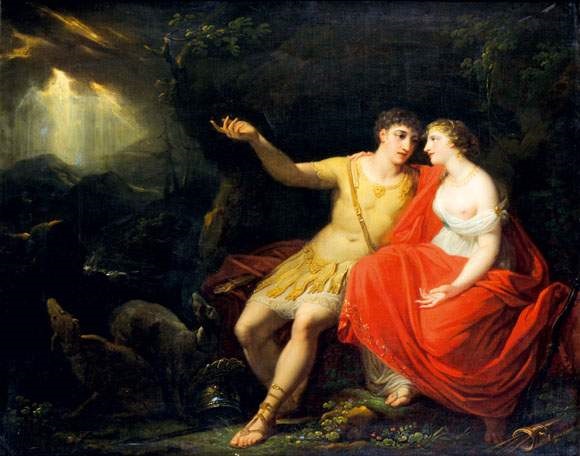The text is entirely sung: 30 songs, plus two orchestral pieces; the performance lasts an hour and a half. Vocals can be lyrical, or non-lyrical and amplified. The music is designed to be performed entirely by mezzo-sopranos and baritones. The accompaniment is symphonic: string quartet, flute, oboe, clarinet, bassoon, horn, trumpet, trombone, piano. In addition to symphonic percussion, a discreet rhythm section accompanies certain songs.
The text is very closely inspired by Virgil’s work (much more so than Purcell’s opera, for example), making the show particularly interesting for many literary classes. But the intensity of the story, the variety of scenes and the quality of the music, which combines classicism and modernity, will appeal to a much wider audience.
The music is melodic (it is not ‘contemporary music’, the melodies are well-crafted but easy to remember, and the harmonies are rather rich), with inflections that are alternately classical, more contemporary, jazzy, etc. The whole is both original and coherent – the orchestration, which is classical throughout, provides this coherence, even for one or other piece of very different style, orientalist or jazzy.
